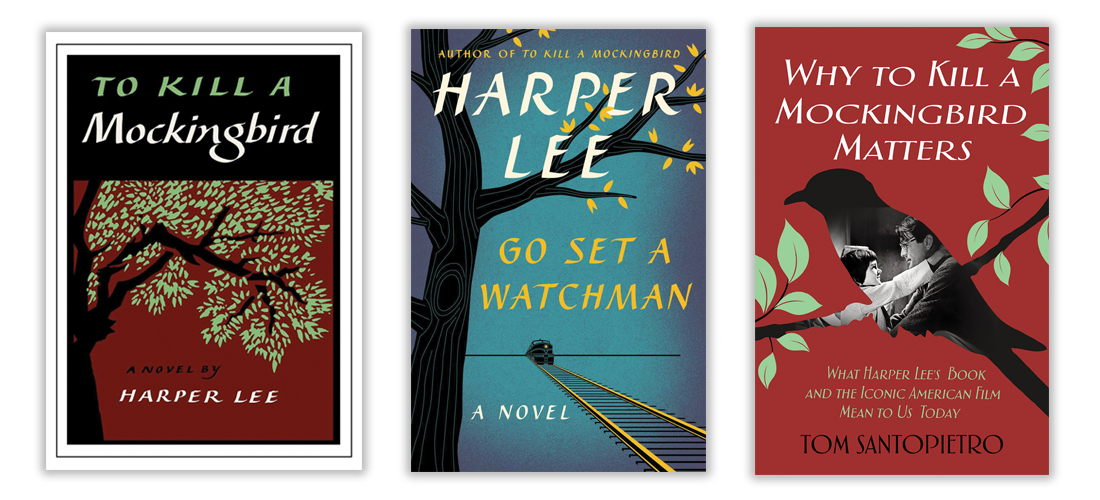
A Masterpiece that Matters
To Kill a Mockingbird continues to resonate
By D.G. Martin
Last October, on the final episode of PBS’s The Great American Read, Harper Lee’s 1960 Southern classic To Kill a Mockingbird was named “America’s Best Loved Novel.”
From a list of 100 candidates and a total of 4 million votes cast over several months, Mockingbird was a clear winner, receiving 242,275 votes.
What explains the popularity of Mockingbird and its staying power more than a half century after its publication?
The host and leader of the The Great American Read, Meredith Vieira, said she was not surprised with the result. “Mockingbird,” she said, “is a personal favorite of mine — one that truly opened my eyes to a world outside of my own. Harper Lee’s iconic work of literature is cherished for its resonance, its life lessons and its impact on one’s own moral compass.”
Vieira told USA Today that she would have picked Mockingbird if it had been solely up to her. “I read it when I was 12. Of course it holds up; it’s a brilliant novel, and all of the lessons I learned then resonate deeply now. I think the reason I picked it is because I read it at a pivotal time in my life. I was a young kid growing up in Rhode Island and I didn’t know anything, really, about bigotry or racism, and that book pointed it out in the voice of a little girl, which appealed to me. And her dad (Atticus Finch), his ability to fight the good fight and step into other people’s skin. When you’re trying to determine your moral code moving forward, in that time in your life, your parents are influential, teachers are as well, but books are, too. And that book said to me, ‘You can do the right thing, or you can do the wrong thing.’”
For me, the book’s lasting success comes from its poignant story of Jean Louise, or Scout, whose love and respect for her father, Atticus, and his example gave her the courage to face the dangers and unfairness of a flawed world. It is also Atticus himself, the small town lawyer in the Jim Crow South of the 1930s, with his example of dignity, kindness and courage.
But it is much more complicated according to a new book, Why To Kill a Mockingbird Matters: What Harper Lee’s Book and the Iconic American Film Mean to Us Today, by Tom Santopietro.
That staying power is remarkable, according to Santopietro, because in “the nearly sixty years since Mockingbird was originally published, the world has changed much more than the previous three hundred years combined.”
Santopietro gives us a biography of the Mockingbird phenomenon. He takes us to Harper Lee’s hometown, Monroeville, Alabama, and introduces us to the friends, family and neighbors who were models for the characters of her book, to her gentle home life, and the town’s oppressive segregated social system.
In Mockingbird, Monroeville becomes the fictional town of Maycomb. Harper Lee as a child is the basis for the central character, the tomboy nicknamed Scout. Lee’s father, A.C. Lee, is the model for Atticus Fitch. Her childhood friend, Truman Capote, becomes Scout’s good friend, the irrepressible Dill. Her family’s troubled neighbor, Sonny Boulware, is the inspiration for the mysterious, frightening and, ultimately, heroic Boo Radley.
Santopietro explains how Mockingbird was first written and then rewritten. Lee’s early drafts focused on Jean Louise as a grown-up. The revisions eliminated the adult woman from the book and only told Scout’s childhood story.
When the revised work was sold to a publisher, it took the country by storm and won the Pulitzer Prize.
Then came the movie staring Gregory Peck as Atticus. Santopietro devotes twice as many chapters to his account of the production of the movie as he does for the making of the book.
On UNC-TV’s North Carolina Bookwatch recently, Santopietro explained how Peck’s star power enhanced the role of Atticus. “Peck was also a smart Hollywood star, and he thought, ‘I’m producing the film, I’m starring in the film, there’s gonna be a big courtroom scene in there.’ He was protecting his territory.”
In that powerful courtroom scene, Atticus defends the black defendant, Tom Robinson, who is accused of the rape of a white woman. Atticus demonstrates Robinson’s innocence, but the all-white, all-male jury convicts him nevertheless.
Mockingbird’s powerful message of racial injustice and oppression was clear, in the book and the film. Certainly, race is an important factor in the book’s continuing importance.
But Santopietro believes that something else explains why the book “still speaks to such a wide range of people.”
On Bookwatch, he explained, “What the book to me is about that’s so extraordinary — and I tried to write about this — it’s about what I call the ‘other,’ the concept of anybody who does not feel like they fit in. Every one of us in this room, every human being at some point, feels like the ‘other.’ You talk differently, you walk differently, you act differently, and that’s the journey through adolescence, which is universal. We all have felt that way sometimes. And, what Harper Lee is saying is that when we’re children, we think of the world as black and white, all good, all bad, but it’s so many different shades of gray. That’s our journey through adolescence, and she makes us realize that the people we fear, the monsters in our life, in fact can be our saviors. So, there are two people who fit the construct of the ‘other’ in Mockingbird. One is Tom Robinson, the African-American man unjustly accused of raping a white woman, and the other is Boo Radley. So, Scout and Jem think of Boo Radley as this monster in that dark house and, in fact, he’s their savior at the end, and I think that universal journey through adolescence — as we all learn those lessons — that to me is why the book still matters.”
In 2015, shortly before her death, the publication of Harper Lee’s Go Set a Watchman gave us a different and disturbing look at Atticus in the 1950s, set 20 years after the events in Mockingbird.
On a visit home, Jean Louise sees Atticus leading a meeting of the local White Citizens’ Council, one of many established throughout the South in the wake of the Brown v. Board of Education decision to resist the Supreme Court’s and the NAACP’s efforts to destroy “the Southern Way of Life.”
Confronting Atticus, she says the Citizens’ Council contradicts everything he had taught her. Do we now, like Jean Louise, have to push Atticus Finch out of our pantheon of heroic images?
Even though he is on the wrong side of history, Atticus’ core human values win out as they lead Jean Louise to confront him and to make him proud of her for doing so.
Many of our parents and grandparents who lived in Atticus’ times, like him, would never fully accept the changes the civil rights revolution brought to our region. But the core values of human kindness and respect for all people that they taught prepared their children to welcome and even work for those changes.
And for that, they and Atticus are for me, although imperfect, still heroes. OH
D.G. Martin hosts North Carolina Bookwatch, which premiers Tuesdays at 8 p.m. on the North Carolina Channel and airs on UNC-TV Sundays at 11 a.m. and Thursdays at 5 p.m.





